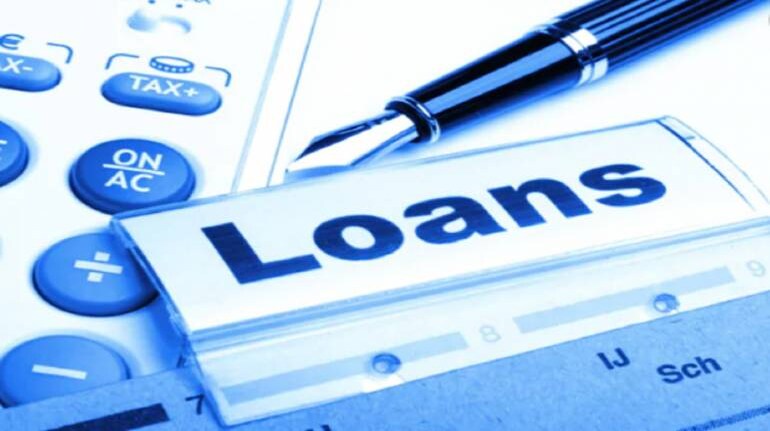When you’re shopping for a personal loan, one of the most important factors to evaluate is the interest rate. It determines how much you’ll pay over the life of the loan, affects your monthly payments, and directly influences the overall affordability of your financing. But with offers varying widely from lender to lender, you might be asking: What’s a normal interest rate for a personal loan?
In this detailed guide, we’ll break down the typical interest rate ranges, what affects your rate, and how you can qualify for the best rates possible.
What Is an Interest Rate on a Personal Loan?
The interest rate is the percentage a lender charges you to borrow money. With personal loans, it’s often expressed as an Annual Percentage Rate (APR), which includes the base interest rate plus any applicable fees.
Understanding this number is crucial because it affects:
- Monthly payment size
- Total loan cost
- Budget planning
- Debt affordability
Average Personal Loan Interest Rates in 2024
As of recent data, the average personal loan interest rate in the United States varies based on your credit score, lender, and loan term. Here’s a breakdown of what you can typically expect:
| Credit Score Range | Estimated APR Range |
|---|---|
| 720 – 850 (Excellent) | 7.00% – 12.00% |
| 690 – 719 (Good) | 11.00% – 15.00% |
| 630 – 689 (Fair) | 17.00% – 25.00% |
| 300 – 629 (Poor) | 25.00% – 36.00%+ |
Note: The federal legal cap for personal loan APRs is typically 36%, though some lenders might go higher depending on the state and loan type.
Factors That Influence Your Personal Loan Interest Rate
1. Credit Score
Your creditworthiness is the most important factor in determining your interest rate. The higher your score, the lower your risk to the lender, which translates to a lower rate.
2. Income and Debt-to-Income Ratio (DTI)
Lenders assess your income stability and how much of your income is already tied up in debt payments. A lower DTI means you’re more capable of handling new debt, improving your loan terms.
3. Loan Amount and Term
- Shorter terms (12–24 months) often come with lower interest rates but higher monthly payments.
- Longer terms (48–60+ months) may have higher rates, as they pose a higher risk to lenders.
4. Secured vs. Unsecured Loans
Secured loans (backed by collateral) often carry lower rates than unsecured loans (which rely solely on your credit profile), because they reduce lender risk.
5. Type of Lender
- Credit Unions: Often offer lower rates to members.
- Online Lenders: May provide fast access with competitive rates for various credit profiles.
- Banks: Tend to offer the best rates to long-term or existing customers.
How to Qualify for the Best Interest Rates
1. Improve Your Credit Score
Pay down credit cards, dispute errors on your credit report, and make all payments on time. Even a small increase in your credit score can unlock a better rate.
2. Reduce Your Debt-to-Income Ratio
Pay off existing debts and avoid taking on new debt before applying for a personal loan. A lower DTI signals financial responsibility.
3. Shop Around and Compare Offers
Use prequalification tools that only perform a soft credit check to compare interest rates from multiple lenders without damaging your score.
4. Consider a Co-Signer
A trusted co-signer with excellent credit can help you secure a lower interest rate, even if your own credit score is average or poor.
5. Choose the Right Term Length
If you can afford higher monthly payments, opt for a shorter loan term. It may come with a lower interest rate and reduce the total interest you’ll pay.
What Fees Are Included in the APR?
APR gives a complete picture of what your loan will cost annually. In addition to the interest rate, it includes fees such as:
- Origination fees (usually 1–8%)
- Application fees
- Prepaid interest
- Underwriting or processing fees
Tip: Always ask for the APR—not just the interest rate—when comparing loans. A lower interest rate doesn’t always mean a cheaper loan if the fees are high.
Red Flags: When Interest Rates Are Too High
If you’re offered a personal loan with an APR over 36%, it may be a sign of:
- Predatory lending
- Desperation-based approval (no credit check loans)
- Unsecured payday-style loans with hidden traps
Loans with such high rates can quickly spiral into unmanageable debt. Avoid lenders that advertise guaranteed approval without checking your credit.
How Personal Loan Interest Rates Compare to Other Financing Options
| Loan Type | Typical APR Range | Best For |
|---|---|---|
| Personal Loan | 7% – 36% | One-time expenses, debt consolidation |
| Credit Cards | 17% – 29% | Short-term purchases |
| Payday Loans | 200% – 600%+ | Emergency only (generally not advised) |
| HELOC/Home Equity Loan | 5% – 10% | Homeowners with equity |
| 0% APR Credit Cards | 0% (intro) | Short-term use within promo window |
Personal loans strike a balance between affordability and flexibility—especially for people without home equity or a strong credit card profile.
Conclusion: Know What’s Normal to Get the Best Deal
So, what’s a normal interest rate on a personal loan? It depends. For borrowers with excellent credit, rates below 10% are common. For those with average credit, rates in the 15%–25% range are more realistic. If your credit is poor, anything below 30% can still be considered acceptable—but only if the loan helps you meet a real financial need responsibly.
Understanding the factors that influence rates and comparing multiple lenders are key to finding a fair offer. Always calculate your total repayment cost before signing and avoid high-interest traps disguised as personal loans.
